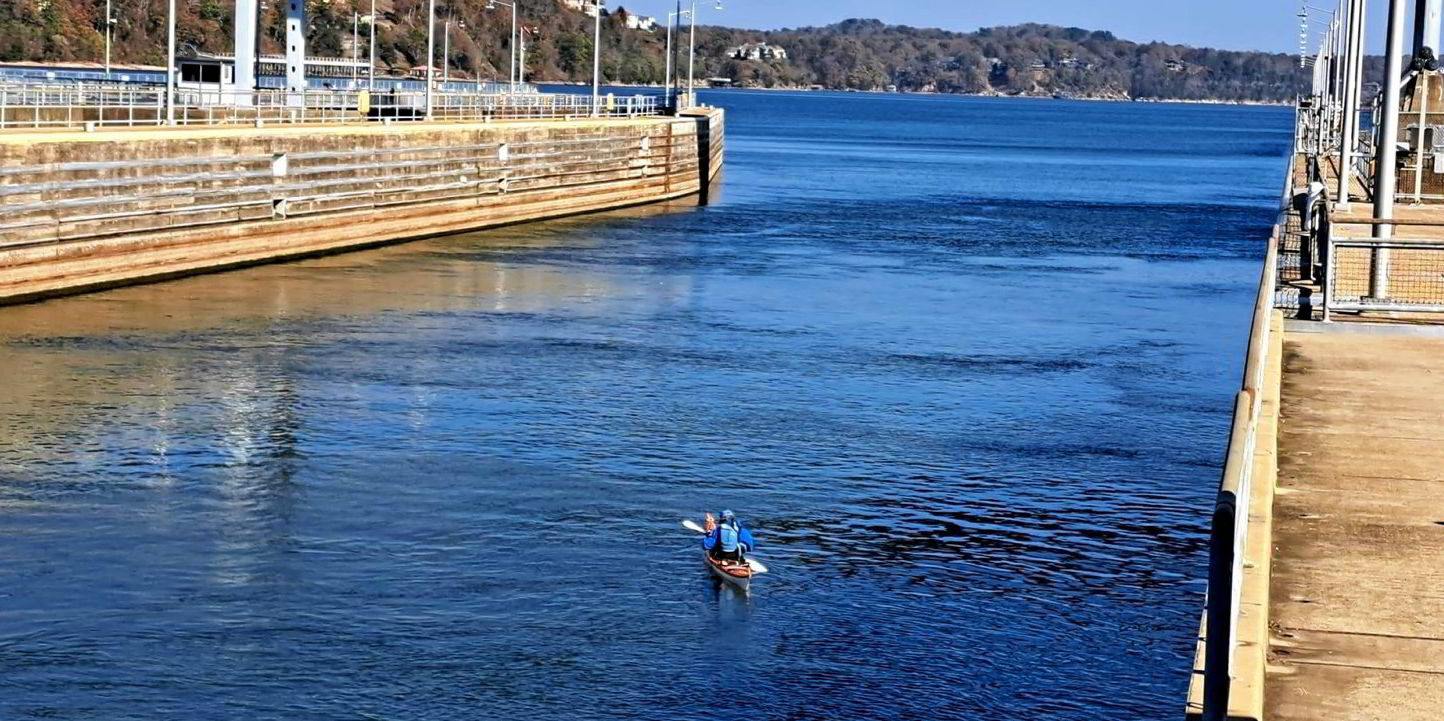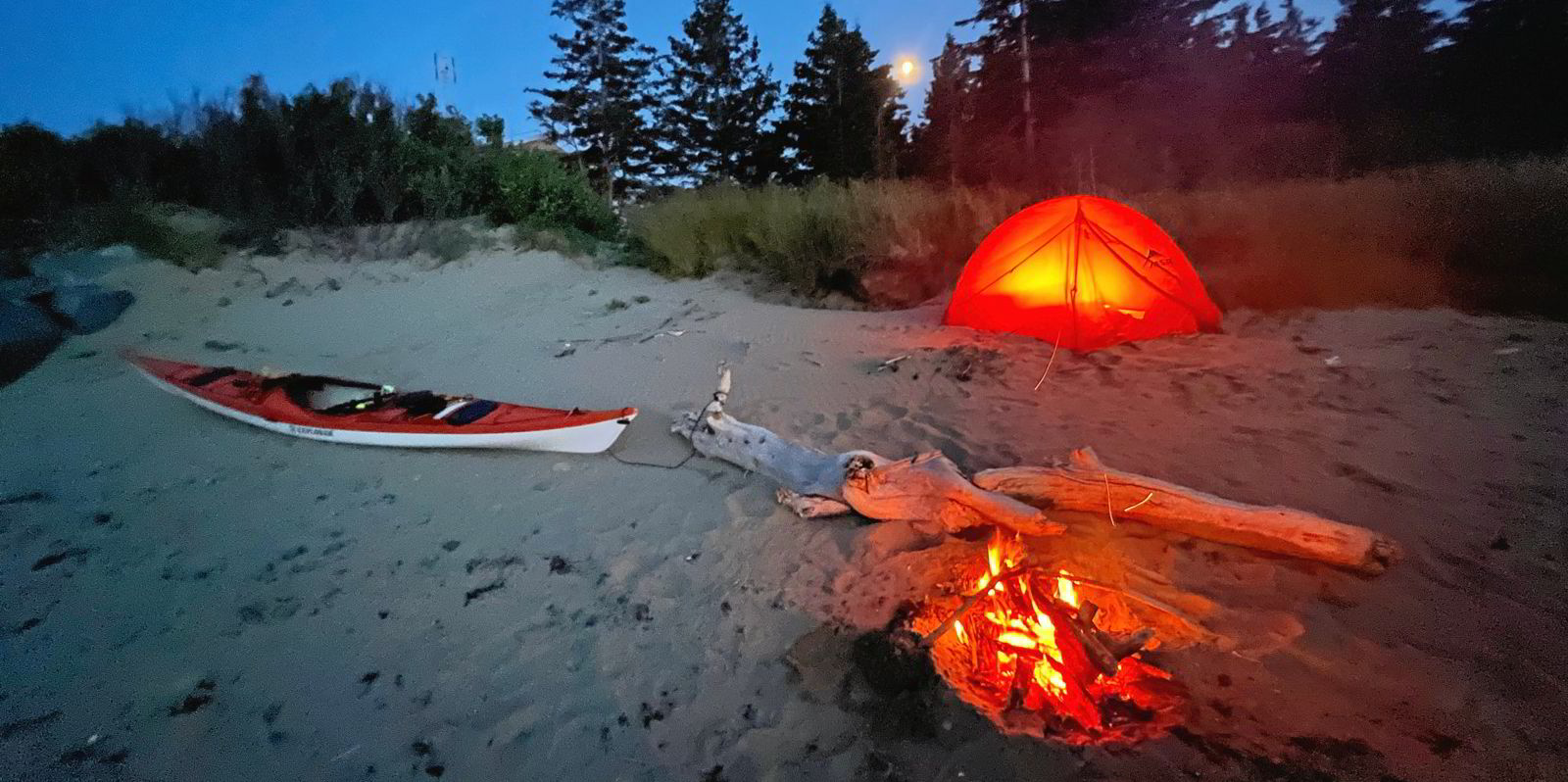After six months paddling 5,800km (3,600 miles) across sea, lakes and rivers in a kayak from northern Canada to the Gulf of Mexico, Mark Fuhrmann has only 4,300km or so remaining to achieve a full journey’s loop.
Halfway through a solo adventure to raise €100,000 ($106,000) for charities Doctors Without Borders and Captains Without Borders, the maritime public relations executive decided a break was in order to recharge over the festive period.
So, leaving his kayak with the Mobile Yacht Club, he joined his 94-year-old father in Vancouver for Christmas for the first time in 35 years — returning to Alabama to start paddling again on 5 January.
“My back is sore, my hands are clawed and, man, I could do with a few nights in a proper bed,” the 65-year-old founder of Oslo-based Blue-C said when he arrived in Mobile on the Gulf of Mexico.
TradeWinds caught up with Fuhrmann while he was in Vancouver to speak about the highs and lows of this journey so far — and what comes next for the man who completed a 5,900km kayak trip from Oslo to Athens in 2017.
“It’s been the most trying thing I’ve done in my life,” he said, making Oslo to Athens feel “like a piece of cake”. This larger loop is one that has never been done in a kayak.
From his starting point in Halifax, Nova Scotia, he said he encountered some difficult months as he headed up the Atlantic coast around northern Canada, past Prince Edward Island, New Brunswick and Quebec, and into the St Lawrence Seaway.
He said the waters got calmer after Montreal, as he followed the Ottawa River, Rideau Canal and Trent-Severn Waterway — a 386km canal that links Lake Ontario with Lake Huron.
“Those days were beautiful,” he said. “There were lots of flies but it was summer and I was warm.”
However, it was cold by the time he got to Georgian Bay, which opens onto Lake Huron, in September, while Lake Michigan was “three weeks of just horrible, crushing windy weather”.
By November, on the Illinois River, it was well below zero in his tent at night. He was saved from going down with pneumonia by a couple on a yacht, who gave him a place to stay for three nights to warm up.
It was still cold as he paddled the Mississippi River, then the Ohio River, into Kentucky Lake.
“I really needed to get south,” he said.
Next up was the Tennessee River that feeds into the Tenn-Tom (Tennessee-Tombigbee) Waterway.
“When I got that far, it started to get warmer and the last three weeks through Alabama to Mobile have been OK,” he said.

It might have been warmer, but it was still fortunately cool enough to keep alligators and snakes at bay. They have not bothered him — yet. But there is still time for that on the next leg towards southern Florida.
“Every day I am fearful,” he said. “Number one is where am I going to sleep at night?”
Dangers have included sudden sharp winds and large waves at sea, brown bears in the Great Lakes, barge traffic on the rivers and potentially unhappy locals that he might be trespassing when he tries to find a safe place to sleep on the shore. Great white sharks could yet be faced off Cape Cod on his return journey.
Luckily, he said: “I have met only good people. I have not met anybody who has been unkind.”
People have been incredibly positive: sometimes donating, other times cooking him a meal, offering a place to stay, or even just a beer.
He has bumped into some people a few times when leapfrogging others sailing in boats on similar routes. One couple — on 10 different occasions — offered him a chance to sleep on an upper deck of their boat.
“They are really nice people,” Fuhrmann said.
In the swamps of Alabama, he met Jerry and friends fishing for catfish, and was treated to a fried fish supper, whisky and a night of songs on a guitar — before he too went fishing with Jerry the next day.
“It was one of the best experiences on the trip,” Fuhrmann said.
Barge traffic on the Mississippi River was reduced as the river was very low, but there have been near-misses with large vessels despite him using a VHF radio to ask what side of a river they want him to take.

One barge unit came up behind him before he was aware of its presence.
“That was a scary experience and the waves coming out of that were two-metre swells,” he said.
Restarting from Mobile, Fuhrmann will take the Intracoastal Waterway for much of the way back up north.
The waterway is a 4,800km (3,000-mile) route linking inlets, saltwater rivers, bays, sounds and canals that runs along the Atlantic coast from Massachusetts down to the southern tip of Florida. A second section follows the Gulf Coast to Brownsville in Texas.
Heading east from Mobile towards Pensacola, Fuhrmann said: “I will have to paddle across the Mobile Bay — a shipping channel which is about an 11-mile crossing. That is daunting. Already I am anxious about it.”
At Fort Myers on the western coast of Florida, he will take a canal across the state to the city of Stuart on the east coast and then the Intracoastal Waterway to Norfolk in Virginia.
He will have to return to Atlantic waters when nearing New York.
“The last portion of the journey could actually be the most difficult,” he said.
Fuhrmann was hoping to get back for Nor-Shipping in Oslo in the middle part of this year. That is looking unlikely, but he still hopes to finish his great loop in June.




